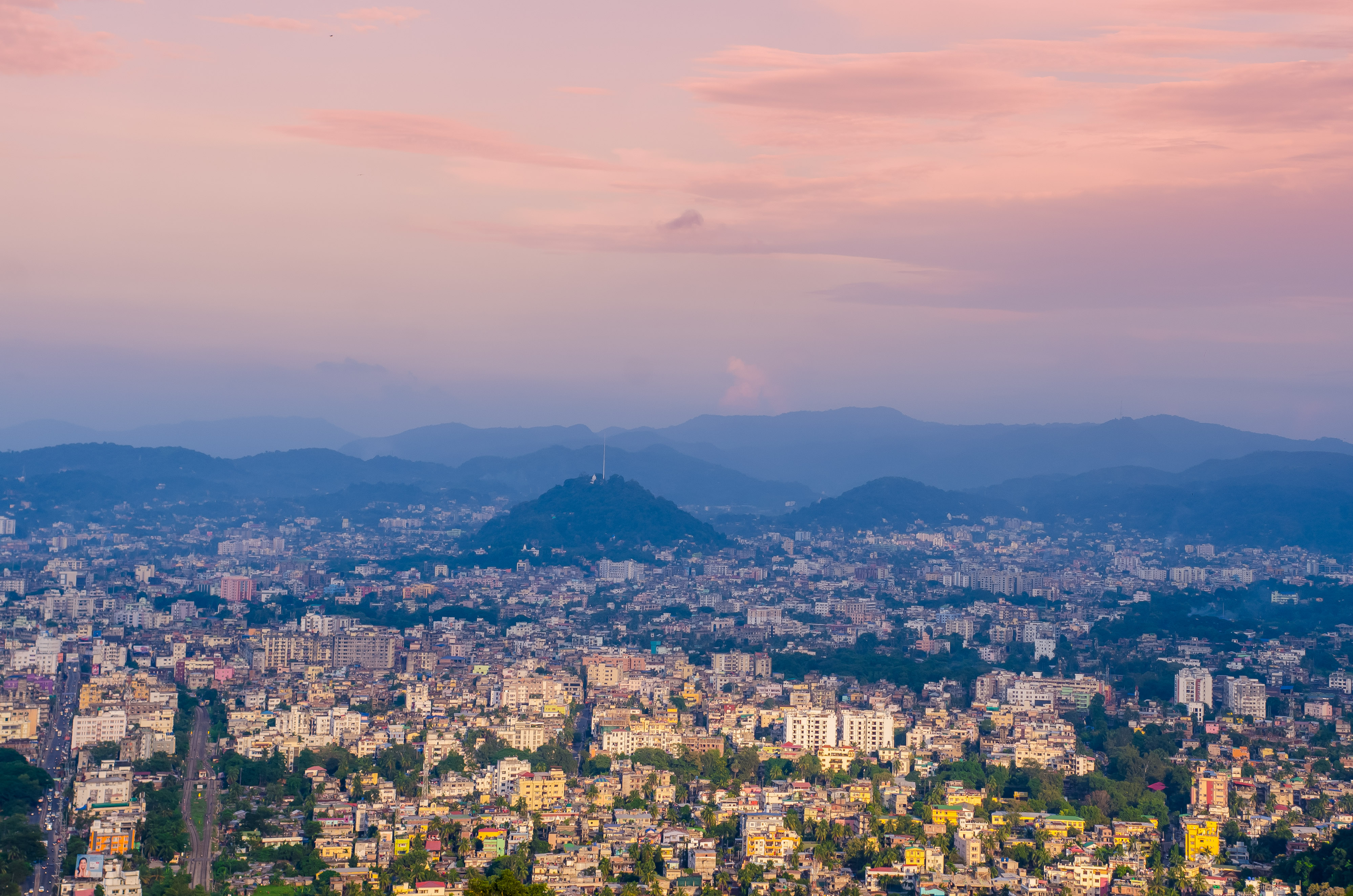
About Sivasagar, Assam
Sivasagar, also known as Sibsagar, is a historically significant town located in the state of Assam, India. Sivasagar served as the capital of the Ahom Kingdom, a dynasty that ruled the region for over six centuries. It was an important center of administration, culture, and architecture during the Ahom reign.
Historical monuments, reflecting the grandeur of the Ahom Kingdom, dot the town. The most notable structures include the Rang Ghar, a royal sports pavilion, the Talatal Ghar, an underground palace, and the Shiva Doul (Shiva Temple), which is the tallest Shiva temple in India.
The Sivasagar Tank, also known as the Borpukhuri, forms the center of the town. The Ahoms constructed this large man-made tank, which is considered one of the largest artificial tanks in the country. Several temples surround the tank, creating a picturesque setting.
Sivasagar is home to several ancient temples that hold religious and cultural importance. The most prominent ones are the Shiva Doul, Vishnu Doul, and Devi Doul. These temples showcase intricate architecture and are popular pilgrimage sites.
Sivasagar offers a unique culinary experience with its traditional Ahom cuisine. Traditional dishes like khar, masor tenga (sour fish curry), and various rice-based delicacies are popular and reflect the local flavors of the region.
Sivasagar celebrates several festivals with enthusiasm. The town celebrates major festivals like the Raas festival, Bihu, and Durga Puja with cultural performances, traditional dances, and music.
The town’s fame lies in its traditional handicrafts, which encompass handloom textiles and pottery. Visitors can explore local markets to purchase unique handicraft items as souvenirs.
Sivasagar showcases a rich blend of history, culture, and natural beauty. Its architectural marvels and historical sites make it a must-visit destination for history enthusiasts and those seeking a glimpse into the ancient past of Assam.
Things To Do in Sivasagar
When visiting Sivasagar, Assam, there are several activities and attractions to explore. Here are some popular things to do :
Visit Ahom Monuments : Explore the historical Ahom monuments in Sivasagar, such as the Rang Ghar, Talatal Ghar, and Shiva Doul. Admire their architectural beauty and learn about the rich history of the Ahom Kingdom.
Explore Sivasagar Tank : Take a leisurely stroll around the Sivasagar Tank (Borpukhuri) and enjoy the serene atmosphere. You can also go boating in the tank and witness the surrounding temples and landmarks.
Visit Temples : Sivasagar is home to several ancient temples. Visit the Shiva Doul, Vishnu Doul, and Devi Doul to experience the religious and cultural significance of these architectural marvels.
Enjoy Assamese Cuisine : Indulge in the flavors of Assamese cuisine by trying local dishes like khar, masor tenga (sour fish curry), and pitha (rice cakes). Visit local eateries and restaurants to savor the authentic flavors of the region.
Explore the Tea Gardens : Take a tour of the tea gardens in and around Sivasagar. Learn about the tea production process, enjoy the scenic beauty of the tea estates, and sample some freshly brewed Assam tea.
Attend Festivals : If you happen to be in Sivasagar during festivals like Raas, Bihu, or Durga Puja, immerse yourself in the vibrant celebrations. Enjoy cultural performances, traditional dances, music, and the festive spirit of the region.
Visit Joysagar Tank : Explore the Joysagar Tank, another important man-made reservoir in Sivasagar. Visit the Shiva Dol and the Joy Dol, two beautiful temples located on the banks of the tank.
Discover Charaideo Maidam : Take a trip to Charaideo, a nearby town known for its ancient burial mounds or maidams. These maidams hold historical significance and are a testament to the Ahom civilization.
Shop for Handicrafts : Explore the local markets of Sivasagar to find traditional Assamese handicrafts, including handloom textiles, pottery, and bamboo crafts. Purchase souvenirs to take home and support local artisans.
Explore Gaurisagar Tank : Visit Gaurisagar Tank, another picturesque reservoir near Sivasagar. It is known for its beautiful temples and serene surroundings.
Sivasagar offers a mix of historical, cultural, and natural attractions that provide a glimpse into the rich heritage of Assam. Enjoy the architectural marvels, indulge in local cuisine, and immerse yourself in the cultural festivities during your visit to Sivasagar.
How to Reach Sivasagar, Assam
Sivasagar, located in Assam, India, is accessible through various modes of transportation. Here’s how you can reach :
By Air : The nearest airport is Jorhat Airport, also known as Rowriah Airport, which is approximately 70 kilometers away. Several domestic airlines operate regular flights from major cities like Kolkata and Guwahati to Jorhat. From the airport, you can hire a taxi or take a bus to reach Sivasagar.
By Train : The nearest major railway station is Simaluguri Junction, located around 16 kilometers away. It is well-connected to cities like Guwahati, Kolkata, and New Delhi. From the railway station, you can hire a taxi or take a bus to reach Sivasagar.
By Road : This Citty is well-connected to major cities in Assam and neighboring states through a network of roads. National Highway 37 (NH-37) passes through Sivasagar, connecting it to cities like Guwahati and Dibrugarh. State-run buses, private buses, and taxis are available for traveling to Sivasagar by road.
By River : Sivasagar is also accessible by river routes. The Dikhow River flows near the town, and boats and ferries are available for transportation. However, this mode of travel is less common compared to air, train, and road options.
Once you reach Sivasagar, the town has a well-connected local transportation system, including auto-rickshaws, cycle-rickshaws, and local buses, to help you get around and explore the attractions within the town.
Before planning your visit, it is advisable to check the current transportation options and availability as well as the schedules of flights, trains, and buses to ensure a smooth and convenient journey to Sivasagar.
Visit Our YouTube Video Channel Harshada Holidays


